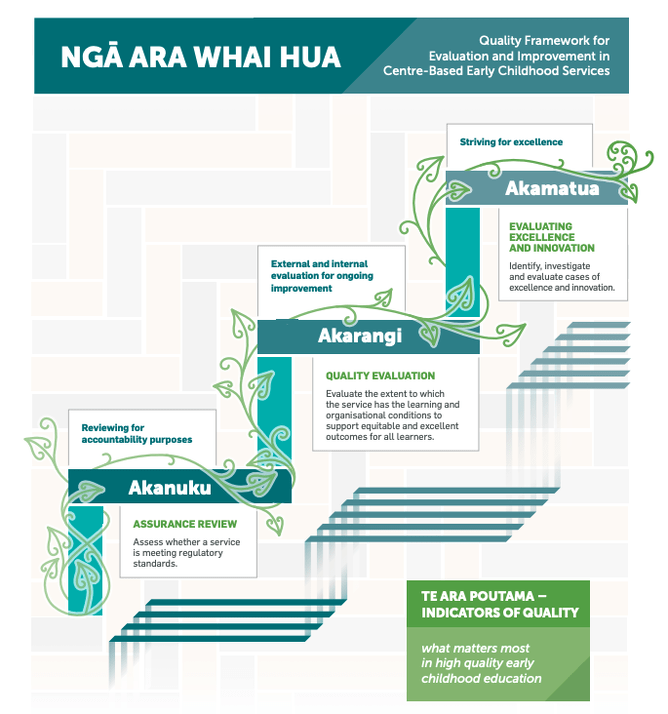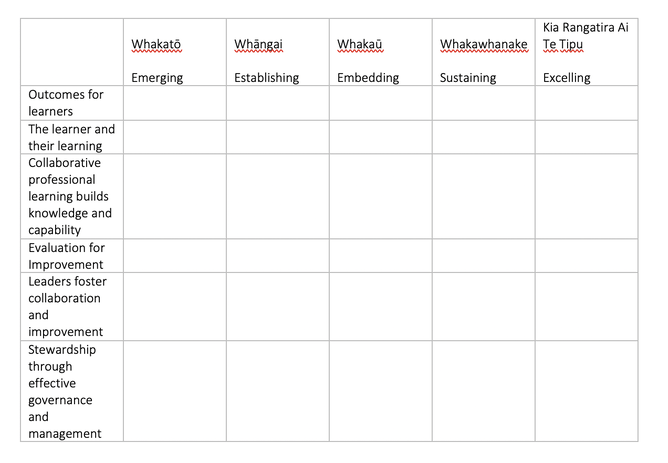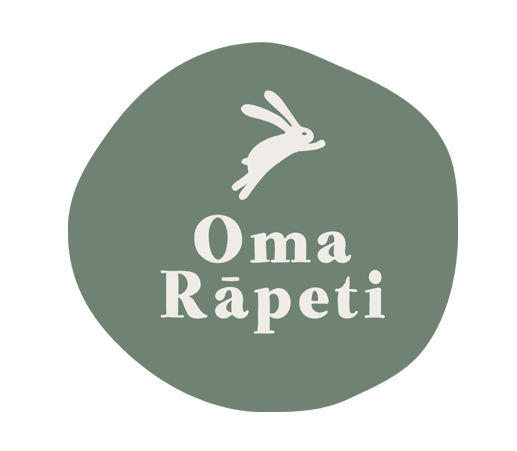What happens in an Akarangi review?
Have you read the first part of this blog over here? Here we set out the previous way ERO worked, what it looks like for new owners and how an Akanuku review would work.
Part of quality education for tamariki consists of some basic health and safety/safety checking/premises. Therefore Te Ara Poutama starts initially with an Akanuku reivew. Akanuku focuses on the issues that ERO sees as being paramount to tamariki safety. This is based around the emotional safety of the children, the physical safety, suitable team members, evacuation procedures and practices. For us in our 2021 review this consisted of a full review of our safety checks of team and processes around this, policy checking, medication and sleep records, and health and safety processes amongst others.
An ERO review usually takes 3 days. The first is focused on Akanuku and at the end of the day you will be told whether you are progressing to a Akarangi review.
Akarangi Review
An Akarangi review always consists of a small "snapshot" of a Akanuku (or compliance) review. This is because, as mentioned in our previous blog, as part of quality education for tamariki there must be a basic level of compliance with health and safety/safety checking/premises.
Therefore even when you are completing an Akarangi review on quality evaluation you will always start with compliance first. For us in our 2021 review this consisted of a full review of our safety checks of team and processes around this, policy checking, medication and sleep records, and health and safety processes amongst others.
An ERO review usually takes 3 days. The first is focused on Akanuku and at the end of the day you will be told whether you are progressing to a Akarangi review.
Te Whāriki
Keen to know how this all links into Te Whāriki? Check out this blog over here.
Now the good stuff...
Here is where, as whānau, you can get a really good picture of what is happening at the service over the 5 learning conditions along with an overarching outcome.
The below chart is an example of the Judgement Rubric that ERO provides us with. You can find the full document here.
Outcomes For Learners
The overarching criteria is "Outcomes for Learners" so we have selected that to go through in a little more detail.
What the judgement rubric says (a short version):
Whakato | Emerging: A centre is focusing on what the child is doing rather than their learning. The centre has limited information in relation to the learning outcomes of Te Whāriki
Whāngai | Establishing: The service is beginning to explore the learning outcomes in Te Whāriki. It has some evidence.
Whakaū | Embedding: The service is increasingly intentional in using the learning outcomes of Te Whāriki.
Whakawhanake | Sustaining: The service has multiple sources of evidence
Kia rangatire ai te tipu | Excelling: The centre has a rich breadth, depth and complexity of children's increasing capabilities in relation to the learning outcomes in Te Whāriki.
Before we go any further, guess which one Oma Rāpeti reached in our 2021 review? Excelling! You can view our full review here.
So what does all this mean?
None of the criteria are designed to be a pass/fail situation but a recognition of where the service is in their learning journey. This means that they technically could get embedding in one learning condition and excelling in another (but this is unlikely!)
If we break it down a little further to some examples:
The learner and their learning:
Part of this learning condition is integrating Te Reo and Tikanga Māori. To receive an excellence in this learning condition the service would need to show the Te Reo and Tikanga practices authentically and richly appear through the centre. This might be in daily rituals (like karakia), language used (such as "kai" rather than "food"). It might be in the level of enthusiasm and skill across the team. The ERO team would be able to observe tikanga practices throughout each area of the centre, such as within the wharemoe. The evidence would be in multiple areas, conversations, feedback from whānau, discussions with kaiako, administration, policies etc. If you think of what best practice could look like, this is where the service is sitting.
Keen to learn more?
We've written a couple of blogs on ERO (because we believe it's really important!) Check them out below:
Making Sense of an ECE ERO review - Part 1





